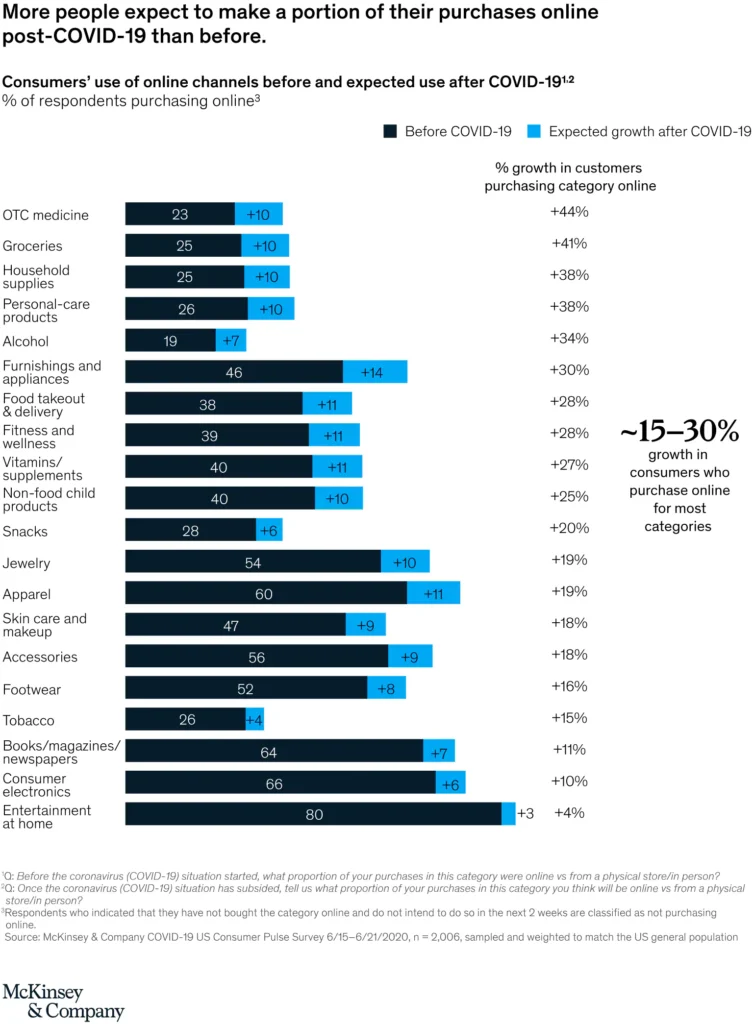A hot cup of coffee is just what you need to get started with a busy workday. Isn’t it? Better still if it’s your favorite Starbucks coffee!
Valued at around $223.78 billion in 2023, the global market for retail coffee is projected to grow at a CAGR of 5.4% up to 2030. 73% of Americans drink coffee daily – while 51% of customers purchase their coffee from a retail shop at least once weekly. Globally, over 2.25 billion coffee cups are consumed every day. In China, the growing retail coffee industry generated revenues of $15.34 billion in 2022.
Just like a coffee cup can fuel your energy, a modern Point-of-Sale (PoS) system is what delivers business value for retail coffee brands. Beyond simplifying customer orders and payments, a PoS is also a vital cog in improving the customer experience (CX).
In this blog, we shall explore:
- Why is the global retail industry modernizing to the cloud?
- Why do PoS systems need to be modernized?
- The challenges of legacy PoS systems
- Benefits of a modernized cloud-based PoS system
- Best practices in PoS modernization
Before we move to the heart of this discussion, let’s first explore why and how the retail industry is modernizing in terms of technology, data, and more.
Retail modernization – An Industry perspective
The COVID-19 has permanently changed shopping behavior in the overall retail sector. Across all retail categories, there has been a 15-30% increase in online consumers (as shown below).

Consumers comprising millennials and high-income earners are switching brands at an unprecedented rate. 75% of U.S. consumers are changing their shopping behavior following a store closure or economic reasons. Modern consumers are demanding value for their money in essential categories like coffee retail.
How are retailers responding to this challenge? Customer loyalty programs are gaining more importance. For instance, the Starbucks loyalty program goes beyond coffee purchases – and rewards its regular customers with “stars” for participating in surveys, challenges, or promotions.
In the face of changing consumer behavior, the retail industry needs to modernize their legacy systems to stay relevant and ahead of competition. A modernized PoS system is just what retail stores need as part of their modernization strategy.
If this got you thinking why modernizing the PoS system matters, keep reading the next section.
Why do PoS systems need to be modernized?
For a seamless customer experience, retailers need to integrate their frontend PoS system with backend functions such as:
- Inventory management
- Customer relationship management (CRM)
- Order tracking
- Retail staff scheduling
- Customer loyalty program
Besides optimizing the customer’s checkout process, PoS can serve as a centralized database of all product offerings, customer records, and product prices. This allows retailers to promote their customer loyalty programs and apply instant discounts on placed orders. A cloud-powered modernized PoS can help coffee retailers implement their loyalty program.

However, the existence of legacy PoS systems in the retail coffee industry poses a host of limitations that can disrupt business operations. Besides incurring high upfront costs, legacy systems can be highly location-specific, which makes it inflexible for coffee brands with evolving business operations.
Effectively, retailers need an efficient scalable PoS system that can support:
- Cloud-native behaviors – thus making it easier to deploy new customer-centric features.
- Implementation of new hardware and software upgrades for scalable PoS functions.
- A cost-effective modernization process that does not disrupt business operations.
Among the other technical reasons, retailers need to provide a consistent user experience between their e-commerce and in-store PoS systems. This ensures that both online and in-store customers can avail the same benefits and functionalities.
As retailers strive to bridge the gap between online and in-store experiences, modernizing their PoS systems becomes a critical priority. However, this transition isn’t without its challenges.
What challenges do retailers face in modernizing their legacy PoS systems?
A successful retail coffee brand must provide a consistent experience to its consumers – both online and offline. However, this is not easy to implement. Coffee retailers have their share of challenges when it comes to modernizing their legacy PoS systems.
At the outset, retailers must understand the cost dynamics of investing in a modern PoS system and solution. Besides the initial capital investment, they need to factor in the additional costs for system upgrades, staff training, and maintenance.
Seamless integration with existing systems is another serious factor. The modernized PoS system must integrate smoothly with existing systems including:
- Employee payroll and financial accounting
- Order management tools
- Customer relationship management
- Payment systems
Without integration, retailers cannot leverage the benefit of real-time data flow between various enterprise systems. Besides influencing data-driven decisions, integration is necessary for avoiding manual data entry, which is prone to errors.
PoS systems must also be user-friendly and intuitive for frontline staff to learn and serve their customers efficiently. Usability is a key factor that can effectively reduce their learning curve. Additionally, frontline staff members must be able to:
- Process customer orders quickly and accurately.
- Customize orders if required.
- Execute the entire ordering process smoothly without any technical glitches.
Among other challenges, data security and privacy are essential when implementing a cloud-based PoS system. A single data breach can seriously damage customer trust and brand reputation – which can lead to an immediate drop in coffee sales. Hence, they need to implement data security measures to protect customer and payment-related information.
Some of these measures include:
- Advanced data encryption
- Regular changes in password
- Strong access control and user permissions
While modernizing legacy PoS systems comes with challenges, overcoming them opens the door to significant advantages. Here’s a deeper look into the business benefits of migrating legacy PoS systems to the cloud.
6 Benefits of modernizing legacy PoS systems to the cloud

A cloud-based PoS system can benefit coffee retailers by:
- Streamlining their front-end sales operations.
- Providing valuable insights into customer behavior.
- Improving the customer experience and operational efficiency.
Here’s how retail coffee brands can benefit by modernizing their legacy PoS in the cloud environment:
- Improved customer experience (CX)
A smooth checkout process is among the crucial touchpoints influencing the customer’s brand perception. With a modernized PoS system, customers can make self-checkouts without waiting in queues. This facility reduces the probability of customers leaving the retail store without making a purchase.
A modern PoS system can also facilitate new customer touchpoints such as:
- Scan and Go facility
- Assisted selling
- Pick and Go facility
- Faster transactions
The core function of any PoS system is its ability to quickly and accurately process customer orders and payments. With its easy-to-access centralized database, cloud-powered PoS systems enable retail executives to find the right product quickly and process the customer order.
By replacing the “traditional” manual method of legacy systems, modern PoS systems enable cashiers to apply discounts and offer multiple payment options to customers.
- Multiple payment options
Coffee enthusiasts can now pay for their beverages using multiple payment options apart from cash and credit cards. For instance, they can avail of Apple Pay or Google Pay to pay using their mobile phones.
A modern PoS system creates a positive brand impression by offering multiple ways for customers to pay for their purchases. This includes options such as:
- Mobile wallets
- Loyalty points
- Gift cards
- Discount coupons
Retailers can also allow customers to “split” their payments between options, thus improving the customer experience.
Additionally, retailers can integrate mobile payments with their customer loyalty programs, thus further boosting their CX and providing insights into customer behavior.
- Efficient inventory control
With legacy PoS systems, coffee retailers manually inspect their inventory, which is time-consuming and prone to human errors. Cloud-based PoS systems automate inventory management by updating the stock levels whenever a coffee product is sold or received.
Additionally, they can integrate their PoS solutions with edge-to-cloud solutions to collect real-time data and apply AI to discover valuable insights for better inventory forecasting and efficiency.
This helps coffee retailers to cut down their financial losses, along with the headaches of manual inventory tracking. Inventory levels are updated in real time whenever a sale is processed by the PoS system.
- Customer loyalty
For modern retail businesses, a customer loyalty program is an effective way to attract new and retain existing customers. Coffee retailers can reward regular customers by offering them loyalty membership or gift vouchers.
Additionally, PoS systems can reward loyal customers by leveraging their purchasing patterns to design customized promotions or offers – or increase their wallet points.
Modern PoS systems can boost customer loyalty by displaying their earned points, and the additional points they need to win a gift. Among the successful customer loyalty programs, a leading coffee retail brand improved its revenues by $2.65 billion – while growing its membership by 25% in 2 years.
- E-commerce integration
A modern PoS system – integrated with an e-commerce system – can provide a seamless omnichannel experience to customers. For instance, each time a customer purchases coffee through a retail store or an e-commerce shop, the transactional data is captured in the PoS system.
Coffee retailers can analyze this omnichannel data to:
- Improve their shopping experience.
- Personalize their customer communication.
- Recommend related products based on the customer’s preferences.
Best practices in modernizing legacy PoS systems
Here are some best practices that retail coffee brands can implement when modernizing their PoS system on the cloud:
- Define business objectives
Efficient planning is the cornerstone for successfully modernizing any legacy PoS system. Consider the specific challenges and requirements of your retail coffee business – and describe how a modern PoS system can address them. A well-defined plan can help retailers avoid potential disruptions during and after the modernization.
Planning must involve:
- Defining the business objectives (for example, reducing the operational costs).
- Setting a realistic timeline for the modernization process. This depends on the complexity of the existing legacy PoS infrastructure.
- Allocating adequate resources to make the transition.
- Provide ample staff training
Usability training is essential for frontline staff to start using the new PoS system. Trained staff can easily perform the basic PoS transactions – and even troubleshoot any minor technical issues. Proper training also improves workforce productivity and efficiency – and keeps them engaged at their work.
For the best results, evaluate the quality of customer service and training from the selected PoS vendor. Choose the vendors with the best track record in providing training resources and customer support.
Additionally, retailers must ensure continuous staff training to keep them updated on new PoS functionalities and updates. This ensures that staff members can utilize new features for their customers’ convenience.
- Provide self-servicing options
Self-serving kiosks (or cafes) have experienced a robust growth rate in recent years. The self-service coffee machine market is valued at $5.83 billion in 2024 – and is projected to rise to $11.73 billion by 2031.
Self-service options also enable personalized recommendations to customers based on their previous orders. Using mobile phones and computer vision technology, retailers can facilitate self-service by allowing customers to:
- Browse through available menu items before purchasing.
- Select and place their order by using a mobile phone or portable device.
Additionally, in-store employees can also use self-servicing facilities to: - Check their inventory levels.
- Customize and place the customer order.
- Apply regular updates to PoS systems
Applying regular updates to PoS systems is necessary to keep them updated for longer use. With regular PoS updates, retailers can:
- Keep up with new PoS features and enhancements.
- Prevent any PoS failures or downtime.
Regular updates are also necessary to install security-related patches or fixes. This ensures that bad actors cannot compromise an outdated PoS system by exploiting any vulnerabilities.
Role of AI in PoS Modernization
AI technology in the retail industry is already enabling companies to tackle challenges in:
- Inventory management
- Business operations
- Customer services
Among the latest trends, AI-powered demand forecasting can help coffee retailers analyze future market conditions using PoS-enabled sales data. AI models can aggregate historical data to identify patterns and predict future demands.
Further, with AI-powered algorithms, retailers can implement advanced analytics to determine the:
- Most or least selling coffee products
- Most popular product categories
- Earnings from each product sales
Future of PoS systems
As PoS technology continues to evolve, coffee enthusiasts can anticipate exciting developments like self-checkouts. Enabled by technologies like AI and computer vision, PoS systems in the future will allow shoppers to pay for their coffee – without any checkout queues.
For instance, coffee drinkers can simply scan their mobile app when entering the shop, purchase their coffee, and simply walk out after payment.
How Onix can help coffee retailers with PoS modernization
As an award-winning Google Cloud partner, Onix can help retailers modernize their legacy PoS systems on the cloud. With its expertise in AI and ML solutions, Onix can support you in your transition from legacy to cloud-powered platforms.
Onix can help retailers solve AI-related challenges and modernize their point-of-sale (PoS) systems by leveraging advanced Google Cloud tools and custom accelerators. Our solutions streamline data preparation, AI model training, and deployment, ensuring retailers can easily adopt AI to enhance operations. With our Kingfisher synthetic data generator, retailers can create privacy-preserving datasets for robust AI training, improving sales predictions, inventory management, and customer experiences.
We also offer Gen AI rapid POC (proof of concept) services to quickly demonstrate value and accelerate AI adoption. Our AI-enhanced PoS modernization services help retailers automate processes, optimize pricing, and deliver personalized customer interactions, driving growth and efficiency.
Our patented Birds suite can streamline your cloud modernization process with the following benefits:
- 2x faster cloud migration
- 50% lesser migration costs
A global retail coffee outlet is always focused on building strong relationships with its customers, and a modern PoS system acts like a direct link, “just like social media” shaping how the brand engages and interacts with its customers. The ultimate goal of modernizing these systems is to provide the best experience for customers while driving increased profits.
At Onix, we make your transition effortless, so you can enjoy your coffee while we handle the heavy lifting. With our AI/ML solutions, data modernization, Generative AI development, geospatial services, and more, we deliver faster results that keep your customers coming back. Contact our team today.









